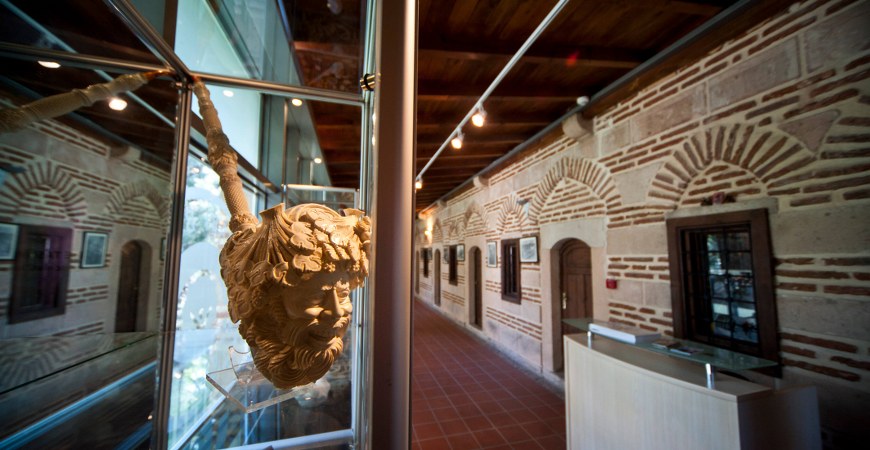The Museums of Eskisehir,
Eskisehir’s first museum was established as a depot in 1945 in Alaeddin Mosque and later moved to the medrese and boy’s school in the precincts of Kursunlu Mosque. Because the buildings housing the museum works were unsuitable for exhibiting them, a new building was constructed in Akarbasi in Eskisehir, which was opened to the public in 1974.
Eskisehir Archaeological Museum:
In the showcases in the first section of Eskisehir, Archaeological Museum is plant and animal fossils from the region of Eskisehir, and in the second section prehistorical works including earthenware ceramics, idols, stone and bone objects dating from the Chalcolithic to the Hittite period. A separate group of exhibits includes works from the Hittites to the late Byzantine period. In this section are dishes of various shapes, figurines, statues, steles, and metal and glass objects. The walls of the room are decorated with the Late Roman period mosaics found in excavations at Sarhoyuk (Doryleum).
There is also a collection of coins from the pm Islamic and Islamic periods. In the courtyard of the museum are inscriptions, steles, sarcophagi, column capitals and building stones etc. from the Roman and Byzantine periods. Eskisehir city Archaeological Museum was designed as an educational museum, containing examples of the archaeological wealth of the region. There are administrative offices, a laboratory, a workshop and depots in the museum building. Eskisehir Ethnographic Museum (Ottoman
Eskisehir Ethnographic Museum (Ottoman House): With the aim of preserving one of the particularly interesting examples of Ottoman civil architecture Eskisehir, Yesil Efendi House in the Dede district of Eskisehir, which was built in the middle of the nineteenth century, was bought up by the state and restored. The ceilings and cupboards provide beautiful examples of wood carving. In the house are exhibited ethnographic works from the region of Eskisehir.



































































































































